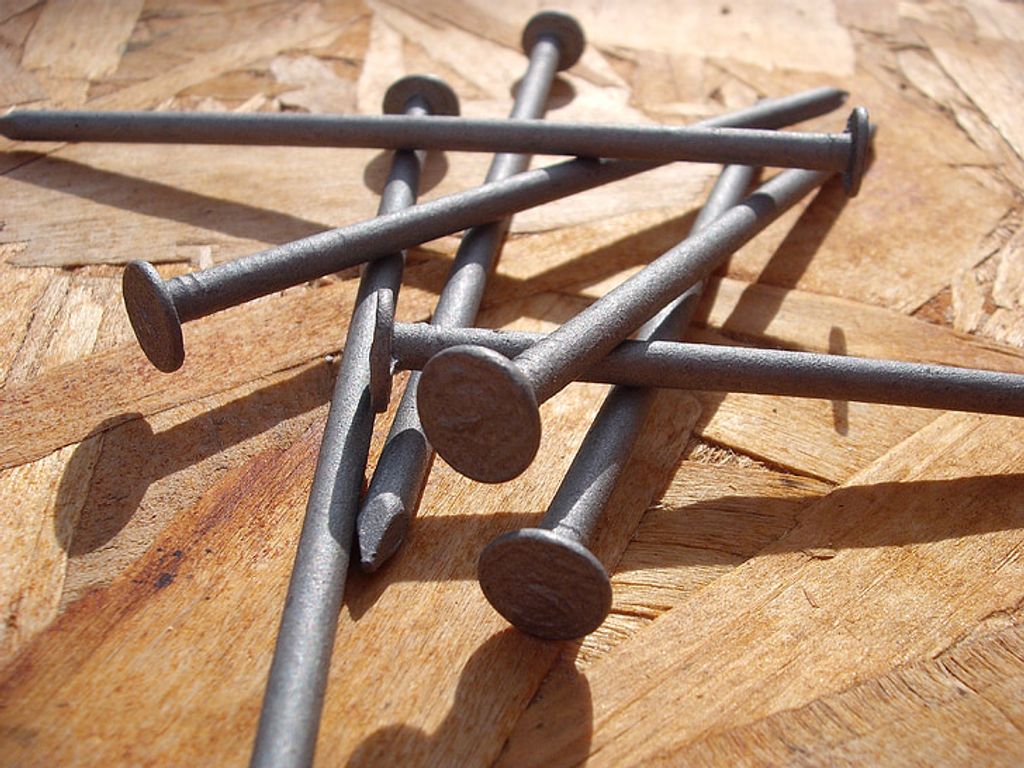“Framing Foundations: Picking Nails for Framing”
In the construction industry, selecting the right nails for framing is crucial for ensuring structural integrity and longevity. This article explores the various aspects of framing nails, from understanding the basics to advanced features and environmental considerations. By the end, you’ll have a comprehensive understanding of how to pick the right nails for framing.
Key Takeaways
- Understanding the types and sizes of framing nails is essential for choosing the right ones for your project.
- Consider the material of the nails, such as stainless steel, galvanized, or aluminum, based on the environmental conditions and requirements of the project.
- Matching the nails to your framing nailer and understanding the implications of pneumatic vs. cordless nailers is crucial for efficient and effective nail usage.
- The collation angle and coating of nails play a significant role in their performance and application, so it’s important to consider these features when selecting framing nails.
- Adhering to best practices, such as optimal nail spacing and avoiding common mistakes in nail application, is key to achieving structural integrity and durability in framing projects.
Understanding the Basics of Framing Nails

Types of Framing Nails
Framing nails are essential components in construction, providing the strength and durability needed to hold structures together. There are several types of framing nails, each designed for specific applications and materials. Common types include common nails with a smooth shank, ring shank nails that offer greater holding power, and screw shank nails which are ideal for high-stress areas or materials that tend to split.
Common nails are typically used for structural framing and are available in various lengths and diameters. Ring shank nails have a series of rings on their shank which makes them more difficult to pull out, making them suitable for flooring and decking applications. Screw shank nails have a twisted design, providing exceptional grip and are often used in hardwood or for siding where expansion and contraction of the material is a concern.
Tip: Always consider the specific requirements of your project when selecting framing nails. The right type can significantly enhance the structural integrity of your build.
It’s important to match the nail type to the material and the environmental conditions it will be exposed to. For example, in areas prone to high moisture or corrosive elements, galvanized or stainless steel nails should be used to prevent rust and degradation.
Nail Sizes and Gauges Explained
When selecting framing nails, understanding the relationship between nail sizes and gauges is crucial. The gauge of a nail refers to its diameter; the higher the gauge number, the thinner the nail. Common gauges for framing nails include 8d, 10d, and 16d, where ‘d’ stands for ‘penny’—a traditional measurement for nail length.
Size is another vital aspect, typically measured in inches. The length of the nail determines its holding power, with longer nails providing greater stability for structural framing. Here’s a quick reference table for common nail sizes and their corresponding gauges:
| Nail Size (Length) | Gauge (Diameter) |
|---|---|
| 2" (8d) | 0.131" |
| 3" (10d) | 0.148" |
| 3 1/2" (16d) | 0.162" |
Tip: Always choose the nail size and gauge appropriate for the thickness of the materials being joined to ensure a secure and lasting frame.
Selecting the right nail size and gauge is not just about fit; it’s about ensuring the integrity of the structure you’re building. A mismatch in size or gauge can lead to weak joints or damage to the materials. Therefore, it’s essential to match the nail specifications with the demands of your project.
The Role of Shank Type in Nail Selection
The shank of a framing nail is the part that penetrates and remains embedded in the wood, providing the necessary grip to hold materials together. The choice of shank type is crucial for ensuring the structural integrity of the frame. There are several types of shanks, each offering different levels of holding power.
- Smooth shank nails are the most common and least expensive. They are easy to drive but offer the least resistance to withdrawal.
- Ring shank nails have concentric ridges that provide more resistance to being pulled out, making them suitable for areas subject to high winds or for materials that may expand and contract.
- Spiral shank nails are designed with a twisted shank that increases holding power by creating greater friction in the wood.
Tip: Always consider the specific requirements of your project when selecting a shank type. For instance, ring shank nails are often recommended for projects requiring enhanced resistance to weather and environmental stresses.
Understanding the differences between these shank types and their appropriate applications is essential for any framing project. The right choice can prevent future structural issues and ensure a lasting build.
Material Considerations for Framing Nails

Choosing Between Stainless Steel and Galvanized Nails
When selecting nails for framing, the choice often comes down to stainless steel or galvanized nails. Both types offer distinct advantages, but the decision should be based on the specific requirements of your project.
Stainless steel nails are highly resistant to corrosion, making them an ideal choice for projects that will be exposed to harsh environmental conditions or where long-term durability is a concern. They are particularly well-suited for coastal areas where salt spray is prevalent.
Galvanized nails, on the other hand, are coated with a layer of zinc to provide protection against rust. While not as resistant to corrosion as stainless steel, they are generally more cost-effective and are sufficient for many indoor framing applications or in environments with less exposure to moisture.
Tip: Always consider the local climate and exposure to elements when choosing between stainless steel and galvanized nails to ensure the longevity of your construction.
It’s also important to note that galvanized nails can be further categorized into electro-galvanized and hot-dip galvanized, with the latter providing a thicker coating and superior rust resistance.
When to Use Aluminum Nails
Aluminum nails are prized for their corrosion resistance and lightweight properties, making them an excellent choice for certain types of projects. They are particularly useful when working with aluminum trims and gutters, as they prevent galvanic corrosion that can occur when dissimilar metals come into contact.
- Corrosion resistance: Ideal for projects exposed to moisture or chemicals.
- Lightweight: Easier to handle and less stress on structures.
- Compatibility: Best used with aluminum components to avoid galvanic corrosion.
Tip: Always ensure that the aluminum nails are compatible with your nail gun to avoid jamming or damage to the tool.
While aluminum nails may not be as strong as other types, their specific advantages make them indispensable for certain applications. It’s important to assess the demands of your project to determine if aluminum nails are the most suitable choice.
Nail Gun Compatibility and Selection

Matching Nails to Your Framing Nailer
Ensuring that the nails you choose are compatible with your framing nailer is crucial for efficient and safe operation. Most nailers are designed to accept a specific range of nail sizes and types, so it’s important to consult your nailer’s manual or specifications to determine the appropriate match.
For example, a common classification system for nails used in framing is the penny size, denoted by the letter ‘d’. A 16d nail is one of the most commonly used sizes for framing. However, nailers will often accommodate a range of sizes, such as 8d to 16d. The gauge, or thickness, of the nail is also a key factor, with most framing nailers accepting nails between 11 to 10 gauge.
Tip: Always double-check the maximum length and diameter your nail gun can handle before purchasing nails. This will prevent jams and ensure optimal performance.
When selecting nails, also consider the collation type—whether they are plastic, wire-welded, or paper-taped—as this needs to align with your nailer’s design. Here’s a quick reference list for matching common nailers with nail types:
- Pneumatic framing nailers: Typically use 21-degree plastic collated nails
- Cordless framing nailers: Often compatible with paper-taped nails
- Coil-style nailers: Use coil nails, which come in long, flexible strips
By carefully matching your nails to your framing nailer, you can ensure a smooth and effective framing process.
Pneumatic vs. Cordless Nailers: Implications for Nail Choice
When considering pneumatic vs. cordless nailers, it’s important to understand the implications for nail choice. Pneumatic nailers are generally cheaper and lighter than cordless nail guns, making them a cost-effective and portable option. On the other hand, cordless nailers offer greater mobility and freedom from air hoses, providing convenience in various working conditions. To help you make an informed decision, here’s a comparison of the key features of pneumatic and cordless nailers:
| Feature | Pneumatic Nailers | Cordless Nailers |
|---|---|---|
| Cost | Affordable | Higher initial cost |
| Weight | Lighter | Heavier |
| Mobility | Limited | Greater |
It’s important to weigh these factors based on your specific needs and the nature of your framing projects. Keep in mind that the choice between pneumatic and cordless nailers can significantly impact the efficiency and ease of your framing work. As a best practice, consider the trade-offs and benefits of each type before making your selection.
Advanced Framing Nail Features

The Importance of Collation Angle
The collation angle of framing nails is a critical factor that influences both the functionality of the nail gun and the efficiency of the nailing process. Nails collated at different angles are designed to fit specific types of nail guns, which typically accommodate angles ranging from 15 to 34 degrees. A proper match between the nail’s collation angle and the nailer’s design ensures smooth feeding and reduces the likelihood of jams.
Choosing the right collation angle also has practical implications on the job site. For instance, nails collated at a 15-degree angle are often wire-welded and come in a coil, making them ideal for siding jobs where access to tight corners is necessary. On the other hand, a 21-degree plastic collated nail provides enhanced holding power, which is beneficial for framing tasks that require strong connections.
Tip: Always verify the collation angle compatibility with your nail gun before purchasing nails to avoid unnecessary work stoppages and equipment damage.
Coated Nails: Benefits and Applications
Coated nails are a significant advancement in framing technology, offering several benefits that enhance the construction process. The primary advantage of coated nails is their improved driving performance. The coating, typically made of a polymer or vinyl, acts as a lubricant, allowing the nail to penetrate the wood more easily and reducing the likelihood of wood splitting.
Coated nails also boast increased holding power. Once driven into the wood, the coating creates a bond with the fibers, ensuring a more secure and lasting fit. This is particularly beneficial in applications where structural integrity is paramount.
- Enhanced durability against corrosion
- Reduced friction during driving
- Better grip within the wood
Tip: Always ensure that the coating on the nails is compatible with the wood treatment used, to prevent any adverse chemical reactions that could compromise the nail’s performance.
In summary, the application of coated nails in framing not only streamlines the construction process but also contributes to the longevity and stability of the structure.
Best Practices for Nail Usage in Framing

Optimal Nail Spacing for Structural Integrity
Achieving structural integrity in framing projects is not just about choosing the right type of nails, but also about how these nails are spaced. The spacing of nails is crucial for ensuring the framed structure can withstand the loads it will encounter over time. For example, when attaching sheathing such as plywood or OSB, nails should be spaced at a maximum of 6 inches on-center along supported panel edges and 12 inches on-center in the field of the panel.
- For load-bearing walls and other critical structures, closer nail spacing may be required to provide additional strength. It’s essential to consult local building codes and engineering specifications to determine the appropriate spacing for your specific project.
Tip: Always double-check the spacing requirements for the type of material you are working with, as different materials may require different nail spacing to achieve optimal structural integrity.
In summary, proper nail spacing is a key factor in the durability and safety of a framing project. It’s not only a matter of code compliance but also a best practice for ensuring long-lasting performance.
Avoiding Common Mistakes in Nail Application
After avoiding common mistakes in nail application, it’s crucial to ensure optimal nail spacing for structural integrity. Proper nail spacing is essential for the overall strength and stability of the framing. Consistent spacing helps distribute the load evenly and minimizes the risk of structural failure. Here are some key points to consider:
- Use a nail spacing of 6 inches for wall framing and 12 inches for ceiling joists.
- Consider using a nail gun with a depth adjustment feature to achieve consistent and accurate nail placement.
Remember, maintaining the correct nail spacing is fundamental to the structural integrity of the framing. As a best practice, always refer to the manufacturer’s guidelines for recommended nail spacing and usage.
Tip: Consistent nail spacing is essential for ensuring the structural strength of the framing. Pay attention to the recommended spacing guidelines to avoid compromising the integrity of the structure.
Environmental and Weather Considerations

Selecting Nails for High Humidity Areas
In high humidity areas, stainless steel nails are the recommended choice due to their superior corrosion resistance. These nails offer long-lasting durability and are ideal for coastal regions as well. When selecting nails for high humidity areas, it’s crucial to prioritize corrosion resistance to ensure the structural integrity of the framing.
Cold Weather Framing: Nail Selection Tips
When working in cold weather conditions, it’s crucial to select the right [nails](https://www.thomasnet.com/articles/hardware/best-framing-nailer/) for the job. Cold temperatures can affect the performance of nails, leading to potential issues with structural integrity. To ensure the best results, consider using nails specifically designed for cold weather applications. These nails are engineered to withstand temperature variations and maintain their strength and holding power even in freezing conditions. It’s important to prioritize the quality and composition of the nails to prevent any compromises in the structural stability of the framing.
When it comes to nail art, environmental and weather considerations play a crucial role in maintaining the beauty and longevity of your designs. Factors such as humidity, temperature, and exposure to the elements can impact the durability and appearance of your nail art. At NAILinspire.com, we understand the importance of these considerations and provide expert tips and advice to help you create stunning nail art that withstands environmental challenges. Visit NAILinspire.com today to explore our ultimate online nail art design library and discover the secrets to weather-proof and environmentally-friendly nail art.
Frequently Asked Questions
What are the different types of framing nails?
The different types of framing nails include common nails, box nails, sinker nails, and duplex nails.
How do nail sizes and gauges affect framing?
Nail sizes and gauges determine the strength and holding power of the nails, as well as their compatibility with different materials.
What is the role of shank type in nail selection?
The shank type of a nail affects its holding power, penetration, and resistance to withdrawal, making it important for specific framing applications.
When should stainless steel nails be chosen over galvanized nails?
Stainless steel nails are preferred for outdoor and marine applications where corrosion resistance is essential, while galvanized nails are suitable for general framing in non-corrosive environments.
What are the implications of using pneumatic vs. cordless nailers on nail choice?
The choice between pneumatic and cordless nailers affects the type and size of nails that can be used, as well as the convenience and portability of the nailer.
How does nail spacing impact structural integrity in framing?
Optimal nail spacing ensures proper load distribution and structural stability, while inadequate spacing can compromise the strength of the frame.







